|
MISSION STATEMENT
Violence is the main obstacle to human development. There is an intrinsic link between violence and religion, patriarchal gender violence being the most pervasive expression of religious violence. Mitigating violence therefore requires overcoming the patriarchal mindset, especially in religious institutions. The mission of this independent newsletter is to provide a commented digest on current research and emerging issues related to human solidarity, ecological sustainability, and both religious and secular non-violence. The U.N. "Millennium Development Goals" (MDGs) are used as a point of reference.
Theme of this Issue
Review of the 2007 State of the Future Report
|
SUMMARY
The space allocation and layout of this issue has been changed to accommodate a review of a major resource: the 2007 State of the Future Report (SOF2007). Sections 1 and 2 attempt to place the report in context, especially with respect to the MDGs and the WFUNA Millennium Project. Sections 3, 4, 5, and 6 contain the review of the 2006-2007 SOF research. Section 7 offers some concluding reflections about this major work. Sections 8 and 9 follow the usual pattern.
The 2007 State of the Future Report compiles the executive summaries of all the 2006-2007 studies done by the Millennium Project. It is like an executive summary of executive summaries, with a high level executive summary of its own. Pointers are provided for the readers who might want to all the supporting research material, contained in the CD that comes with the printed report. Those who take the plunge should be ready to swim deep.
The SOF reports constitute one of the major resources available for researchers and practitioners of international development and related global issues. They complement the MDG, HDR, and other UN reports by providing comparable information independently assembled from hundreds of experts worldwide. The report on each of the 15 global challenges, as well as other reports, convey a reassuring sense of balance between positive and negative trends. This is honest to goodness research reporting, not propaganda. Only one serious weakness was found: the social and environmental impacts (both positive and negative) of organized religion are not given due consideration. The word "religion" does appear here and there, but it is not differentiated from "organized religion." This is a controversial subject, but one that must be faced in the post-9/11 world. Religion is both indispensable and dangerous for human development. It is indispensable, because the "inner journey" that leads to individuation requires spiritual guidance. It is dangerous, because nothing leads to violence as fast as religious fanatism. The SOF report has now been published for eleven consecutive years. Jerome C. Glenn, director of the Millennium Project, and his associates, are to be congratulated for their major contribution to a better future for humanity and the human habitat.
Updating of the SSNV-MDG knowledge taxonomy and links database continues as time permits. The current version shows the links sorted by mega-disciplines, and within each mega-discipline by MDGs. This is "work in progress" but you are cordially invited to take a look at this resource and download it (free) for your own use (two options: HTML Web Page
or EXCEL Spreadsheet).
This month's invited paper is Socioeconomic Democracy and Sustainable Development, by Robley E. George, Center for the Study of Democratic Societies, 25 October 2007. George's paper is an intriguing proposal for a democratic reformation of current taxing systems to eliminate extreme poverty and temper extravagant wealth.
| |
![[hollybar]](hollybar.gif)
1. The UN Millennium Development Goals (MDGs)
This is the twelfth consecutive newsletter about the MDGs. It has been argued that, in terms of net benefit to humanity and the human habitat, the balance seems to be positive, but the jury is still out about the MDGs actually delivering what they promise in terms of human development. Links to essential information about the MDGs are provided here, but this issue will be refocused to look at the MDGs from the angle of an independent research project, the World Federation of United Nations Associations (WFUNA) Millennium Project.
Some people have nicknamed the MDGs as the Minimum Development Goals, because they are too low for countries without massive pockets of extreme poverty, such as most Latin American countries. On the other hand, some people think that they are too ambitious for regions where most of the population live in extreme poverty, such as sub-Saharan Africa. Some countries have already achieved one or more of the 2015 targets, while for others it may take much longer. The fact that these goals are "global" are also a source of controversy, because the goals can be met in the aggregate (globally or in any given country) without reaching down to the poorest of the poor.
Another way to express reservations about the MDGs is to call them the Millennium Development Holes. The "holes" are the gaps perceived to exist in the evaluation process. Most of the MDG-related data is difficult to interpret and, therefore, difficult to validate. Billions of dollars are being proposed as input without ex ante consensus about how the outputs are going to be evaluated. The most difficult problem is not the lack of accurate quantitative data. The real problem is the lack of planning for gathering objective evidence (especially, qualitative evidence about developing people), so that meaningful evidence-based evaluations can be produced.
These funny nicknames are a way of expressing legitimate concerns about a program that has galvanized people everywhere by telling them that what used to be the responsibility of charities is now the responsibility of every citizen of the planet, especially those on the rich side of the rich-poor gap. But galvanizing people does not necessarily translates into concrete benefits if "good solutions" are applied to the "wrong problems." Understanding the intrinsic nature of the obstacles that block the development of people is the most crucial step going forward, and is required for meaningful evidence-based evaluations that take into account a multiplicity of disciplines, cultures, and institutions. In fact, as stated in the Foreword, this is the purpose of the WFUNA Millennium Project:
|
"The purposes of the Millennium Project are to assist in organizing futures research, improve thinking about the future, and make that thinking available through a variety of media for consideration in policymaking, advanced training, public education, and feedback, ideally in order to accumulate wisdom about potential futures. The Project is designed to provide an independent global capacity that is interdisciplinary, inter-institutional, and multicultural for early alert and analysis of long-range issues, opportunities, challenges, and strategies."
|
In a previous issue, a review of the WFUNA Millennium Project Website was provided and will not be repeated here. This issue is a partial review of what the WFUNA Millennium Project's research output. Specifically, the review will attempt to elucidate the extent to which the "State of the Future" reports (now in their eleventh consecutive year) are contributing to isolate the real human development problems that the MDGs intend to resolve, and whether or not the solutions being pursued are conducive to their resolution.
2. The WFUNA Millennium Project
The World Federation of United Nations Associations (WFUNA) was founded in 1946. The opening words of the United Nations Charter are "We the people", and WFUNA was established, and has been active for over 50 years, as a "people's movement" for the UN. WFUNA is actively collaborating with the MDGs and also hosts some key projects of basic research, such as the Center for UN Reform and the
Millennium Project, among others.
The Millennium Project is the focal point for basic research on the MDGs and MDG-related areas. It is a huge project, with offices in Geneva and New York, and "nodes of expertise" in 29 countries. This project, now in its twelfth year, is directed by Clayton C. Glenn, and his principal collaborators are Theodore J. Gordon (Senior Fellow) and Elizabeth Florescu (Director of Research). It is simply not possible to cover their entire research output, so this review will be focused on the printed edition of the 2007 State of the Future report.
This report compiles the executive summaries for all the 2006-2007 studies. The report includes an Executive Summary of its own and research reports on Global Challenges (GCs), the State of the Future Index (SOFI), the outlook for Education and Learning 2030, and analyses of Emerging Environmental Security Issues. The Executive Summary provides a 10-page overview of the 2006-2007 research output, so it is the natural starting point for this review. This is the opening paragraph:
|
"People around the world are becoming healthier, wealthier, better educated, more peaceful, and increasingly connected, and they are living longer, but at the same time the world is more corrupt, congested, warmer, and increasingly dangerous. Although the digital divide is beginning to close, income gaps are still expanding around the world and unemployment continues to grow."
|
Following this introductory paragraph, some space is used to summarize horror statistics that cannot be ignored any longer. Some examples:
- global population keeps increasing and is expected to exceed 9 billion by 2050
- emissions (greenhouse gases) could increase by as much as 90% over 2000 levels by 2030
- globally, 2% of the population owns over 50% of the wealth (the poorest 50% own 1%)
- the income of the 225 richest people equals that of 2.7 billion people, or 40% of humanity
- migration is exacerbating the brain drain, especially with regard to doctors and nurses
- there are 781 million adults who remain illiterate (two thirds of them are women)
- gender violence is the cause of more casualties (mostly female) than war casualties
- the number of people affected by natural disasters has tripled over the last decade
- international crime (drugs, human traffic, weapons) is estimated at $2 trillion
- it is estimated that between 12 and 27 million people are slaves (mostly women in Asia)
- millions of HIV orphans are potential recruits for organized crime/terrorist organizations
To these we might add that global energy consumption per capita (currently 1700 kgoe) is expected to soar in the years ahead (WRI). It is the combination of population getting wealthier, and consuming accordingly, that generates an uncontrollable scenario of both exponential growth of human needs and exponential deterioration of the human habitat. When the widening rich-poor gap is factored in, the situation becomes socially explosive. It follows that technological breakthroughs and/or financial assistance may be necessary, but not sufficient. This is forcefully stated in the concluding paragraph:
|
"Although many people criticize globalization's potential cultural impacts, it is increasingly clear that cultural change is necessary to address global challenges. The development of genuine democracy requires cultural change, preventing AIDS requires cultural change, sustainable development requires cultural change, ending violence against women requires cultural change, and ending ethnic violence requires cultural change. The tools of globalization, such as the Internet, global trade, international trade treaties, and international outsourcing, should be used to help cultures adapt in a way that preserves their unique contributions to humanity while improving the human condition."
|
The Executive Summary is an excellent synopsis of the inevitable cultural transition that will bring reconciliation between humanity and the human habitat. But some other specific points are made in the Executive Summary that prompt a few additional remarks:
- It is stated (page 2) that "the most severe impacts of climate change will be experienced by people in the poorest regions who have emitted the least amount of greenhouse gases."
Thus Vandana Shiva's dictum, "resources flow from the poor to the rich, pollution flows from the rich to the poor." This is how "wealth creates poverty." It is a compounding of social injustice with environmental injustice. Socially, the repercussions may be not only explosive, but cataclysmic.
- It is stated (page 3) that "the International Organization for Standardization (with more than 16000 ISO standards) and the Internet have proved effective mediums for self-organized decisionmaking."
While the improvements in Internet-based "self-organized decisionmaking" are debatable, the improvements due to the ISO standards are indisputable. The ISO standards, such as ISO 9000 series for quality management systems and ISO 14000 series for environmental management systems, have improved quality and reduced waste worldwide, and in addition have contributed significantly to human development by requiring companies to invest in the professional improvement of employees. It is hoped that the forthcoming ISO-26000 series on corporate social responsibility will expedite concepts such as "sustainability" and the "triple bottom line" becoming part of the normal way of doing business.
- It is stated that "if Moore's Law continues, within 25 years a computer could possess the processing power of the human brain; 25 years after that, it could have the total processing power of all human brains." (page 3)
Indeed, Moore's Law (formulated in the 1960s) still holds, but the law refers to the exponential increase (doubling every two years) in the number of chips that can be placed on an integrated circuit; and it is not clear that this has anything to do with the "processing power" of the human brain, especially in matters of judgment, intuition, and wisdom. It is noteworthy that there is another law, Wirth's Law, which states that "software gets slower faster than hardware gets faster," as anyone who has worked in software development knows. There is now an ISO 9000 guideline for software, but any comparison between computing power and brain power is metaphorical.
There are some productivity increases that derive from access to the Internet and everyone having a laptop. But the problems of storing and transmitting the data are nontrivial. There are limits to the number of exabites that can be stored, let alone transmitted. The problem is exacerbated by the fact that most of the exabytes are garbage, plain and simple. There are no limits to wisdom, but there are limits to ICT, and these become limiting sooner because most software is bad and most data are bad. There is also Brooks' Law, about the well known delays of software development projects: "adding manpower to a late software project makes it later." In brief, ICT may be helpful, but rarely a driver of sustainable human development.
- It is stated that "violence against women by men continues to cause more casualties than wars do today." (page 4)
A one sentence statement is hardly enough to acknowledge the magnitude of the issue, which entails 50% of humanity doing harm (physically, psychologically) to the other 50%. Gender violence is the greatest obstacle to human development, and the worst variety of gender violence is religious gender violence. This is admittedly a controversial issue, but it must be faced: patriarchal-hierarchical religious institutions that perpetuate the exclusion of women from roles of religious authority are doing great harm to the integral development of both men and women. The "reasons" adduced are always irrational. The damage done to young minds is practically irreversible. This cannot possibly be what God desires. There have been many analyses of MDG3 (gender equality) that see gender balance as a gateway to all the MDGs. The following report is very instructive: A study on gender equality as a prerequisite for sustainable development, Gerd Johnsson-Latham, Report to the Environment Advisory Council, Sweden, 2007.
- It is stated that "the world needs a process to focus government, corporate, and university scientific, engineering, and medical resources to achieve the eight UN Millennium Development Goals and address the 15 Global Challenges described in State of the Future. We need transinstitutional management and more serious public education through the media." (page 5)
This brings to mind the "principle of subsidiarity," which basically states that decisions should be made at the lowest possible level consistent with the common good. The corollary is that decisions should be made at a higher level when making them at a lower level has repercussions at higher levels. There is no question that environmental phenomena such as global warning are "global issues" which cannot possibly be resolved at the local, national, or even regional levels. It is increasingly recognized that some form of global environmental governance will be needed, and sooner rather than later. For more information on the environmental dimension of global governance, the following publications are highly recommended: Global Environmental Governance: A Reform Agenda, Adil Najam et al, IISD, 2006, and General Environment Outlook 4 (GEO-4), UNEP, 2007. As globalization unfolds, some form of democratic global governance will be required in all dimensions of social life. It is hoped that this need will be considered in conjunction with reform plans for the United Nations.
The Executive Summary includes summaries on the State of the Future Index, the Future Education and Learning Possibilities by 2030, and Environmental Security. These will be reviewed together with the corresponding chapters (sections 4, 5, and 6) of this newsletter. Then it will be possible to examine the SOFI, the educational possibilities 2030, and the emerging environmental security issues in the context of the Global Challenges (section 3).
3. State of the Future (SOF) & Global Challenges (GCs)
This section is a review of chapter 1 of the 2007 State of the Future report. This is where the "15 Global Challenges for Humanity" are defined, and their interdependencies analyzed. The chapter begins with an image that is truly worth 1000 words:
![[15GC-SOF-WFUNA]](15GC-SOF-WFUNA.jpg)
Figure 1 - The 15 Global Challenges for Humanity
Source: WFUNA Millennium Project
REPRINTED WITH PERMISSION
In Figure 1, the GCs are abbreviated.
The following list provides the full text of the 15 questions, linked to the material available online:
- How can sustainable development be achieved for all?
- How can everyone have sufficient clean water without conflict?
- How can population growth and resources be brought into balance?
- How can genuine democracy emerge from authoritarian regimes?
- How can policymaking be made more sensitive to global long-term perspectives?
- How can the global convergence of information and communications technologies work for everyone?
- How can ethical market economies be encouraged to help reduce the gap between rich and poor?
- How can the threat of new and reemerging diseases and immune micro-organisms be reduced?
- How can the capacity to decide be improved as the nature of work and institutions change?
- How can shared values and new security strategies reduce ethnic conflicts, terrorism, and the use of weapons of mass destruction?
- How can the changing status of women help improve the human condition?
- How can transnational organized crime networks be stopped from becoming more powerful and sophisticated global enterprises?
- How can growing energy demands be met safely and efficiently?
- How can scientific and technological breakthroughs be accelerated to improve the human condition?
- How can ethical considerations become more routinely incorporated into global decisions?
The 15 GCs are introduced as follows (page 10):
|
"The 15 Global Challenges provide a framework to assess the global and local prospects for humanity. The Challenges are interdependent: an improvement in one makes it easier to address others; deterioration in one makes it harder to address others. Arguing whether one is more important than another is like arguing that the human nervous system is more important than the respiratory system."
|
This is a good start, but it underestimates the complexity of GC interdependencies. For instance, it could be that improvement in one makes it harder to improve one or more of the others; this might be the case with GC3 and GC13. Likewise, deterioration in one might make it easier to prevent or mitigate deterioration in others; slowing down on GC7 might expedite GC4. And these are examples of first order effects. Complexity is further increased by second and higher order effects. A prudent possibility is to give the same answer to every question: "It depends." But then the value added by this analysis would be zero, which is by no means desirable. Thankfully, there are several options that can be used as "sanity checks" for the "what, where, when, why, who, and how" of decision making about overcoming the GCs, individually or collectively:
- Decision making about the "what, where, and when"
- Use lists or directories of global issues (for example, the Global Issues Research Guide), and check if any critical one is missing
At least one is missing: the role of organized religion. Indeed, the influence of religion in global issues is pervasive. Sometimes the influence is positive, sometimes it is negative. But after the Inquisition and 9/11 (just to mention two episodes), religious violence is a factor that should not be ignored. This is, of course, a controversial topic, but there is no reason to think that we have seen the last episode of religious violence in human history. If both physical and psychological violence are taken into account, religious institutions can have a significant impact on each and everyone of the CGs. One obvious point of impact is GC11. By excluding women from roles of religious authority, some religious institutions are perpetuating male domination in both religion and society. By persisting in the use of male images of God, some religious traditions are perpetuating the phallocentric mentality that leads to all manner of violence against women, including domestic violence.
- Use a 15x8 matrix to analyze CG coverage of the MDGs and vice versa
This requires a team of experts, but an example is shown in Figure 4 of the September 2007 issue.
- Use a 15x15 matrix to analyze the feasibility of sequencing or multiplexing GC subsets
This requires a team of experts, but an example is shown in Figure 5 of the September 2007 issue.
- Use causal loop diagrams to identify chains of second and higher order effects
This is better done by a team, a simple example for the MDGs is shown in Figure 1 of the October 2007 issue.
- Decision making about the "why, who, and how"
- Use futures research methods for forecasting and analysis of global change
Already being used by the Millennium Project (see Futures Research Methodology)
- Use the Delphi method to seek consensus about the most probable future from a panel of experts
Already being used by the Millennium Project (see Global Lookout Studies)
- Use various qualitative analysis methods to elucidate the reasons for human decisions about the GCs
All the sections on the GCs include some statistical information on the "what, where, when." Again, there are quantitative analysis techniques that can be used so as to see both the trees and the jungle. But the most important insights are the "why, who, how" to approach each of the GCs in the context of all the others (it is noted that all the GC questions start with "how"). Many kinds of objective evidence are gathered for qualitative analysis; but the "data" are not numerical, so numerical calculations are not applicable. There are, however, methods of qualitative analysis that are helpful to clarify the meaning of "why, who, how" for each GC individually and all GCs together.
These methods generally attempt to explain the inner reasons for the decisions and actions of human beings, and the explanation is elicited from groups using various methods. Since the SOF report is already the result of gathering and filtering answers from groups, it seems reasonable to take the group answers as printed in the SOF report and proceed with further analysis. For each GC "question", the "core segment" (i.e., "key phrase, sentence, paragraph") of the SOF "answer" is identified and categorized. Then, inductive analysis can be used to do a "sanity check" on the SOF answers to the GCs, both individually and in context with the others.
- How can sustainable development be achieved for all?
CORE SEGMENT: "The synergy between economic growth and technological innovation has been the most significant engine of change for the last 200 years, but unless we improve our economic, environmental, and social behavior and close the gap between the rich and the poor, the next 200 years could be difficult."
|
SEGMENT CATEGORIES:
|
economic growth
technological innovation
change economic behavior
change social behavior
change environmental behavior
close rich-poor gap
growth last 200 years
uncertain next 200 years
|
- How can everyone have sufficient clean water without conflict?
CORE SEGMENT: "We need an integrated global water strategy, plan, and management system to focus knowledge, finances, and political will to address this challenge."
|
SEGMENT CATEGORIES:
|
integrated global water strategy
integrated global water plan
integrated global water management
knowledge access
financial management
political will
|
- How can population growth and resources be brought into balance?
CORE SEGMENT: "The factors reducing population growth still need to be reinforced. These include increased income, improved literacy, diminished infant mortality, empowerment and education of women, urbanization, and family planning."
|
SEGMENT CATEGORIES:
|
population growth reduction
increased income
improved literacy
diminished infant mortality
empowerment of women
urbanization
family planning
|
- How can genuine democracy emerge from authoritarian regimes?
CORE SEGMENT: "Although making development assistance dependent on good governance has helped in some countries, genuine democracy will be achieved when the people—not external actors—demand government accountability. International protocols are needed to assist failed states or regions within states, and intervention procedures are needed when a state constitutes a significant threat to its citizens or others."
|
SEGMENT CATEGORIES:
|
development assistance
good governance
genuine democracy
people internally demand accountability
external actors demand accountability
international protocols
intervention procedures
threat to citizens
threat to other countries
|
- How can policymaking be made more sensitive to global long-term perspectives?
CORE SEGMENT: "The world has become too complex to be managed by nation-state hierarchies alone; new patterns of governance are emerging to better manage global long-term decisionmaking."
|
SEGMENT CATEGORIES:
|
world system
global system complexity
nation-state hierarchies
new patterns of governance
global management
long-tern decisionmaking
|
- How can the global convergence of information and communications technologies work for everyone?
CORE SEGMENT: "The Internet is moving from a system to find and read pages to users contributing and interacting with multimedia..... The Internet is already one of the most powerful forces for globalization, democratization, economic growth, and education in history, and now a planetary collective intelligence is emerging."
|
SEGMENT CATEGORIES:
|
global ICT expansion
more than find and read
users interacting with multimedia
users providing inputs
users collaboration
internet enables globalization
internet enables democratization
internet drives economic growth
internet enhances education
planetary collective intelligence
|
- How can ethical market economies be encouraged to help reduce the gap between rich and poor?
CORE SEGMENT: "A strategic plan for a global partnership between the rich and poor should be created and implemented that uses the strength of free markets and rules based on global ethics to reduce the disparities that otherwise might grow enough to increase migration of the poor to richer regions, increasing conflicts."
|
SEGMENT CATEGORIES:
|
strategic plan
global partnership
rich-poor solidarity
free markets
global ethics
contain migration
brain drain
gap leads to conflicts
|
- How can the threat of new and reemerging diseases and immune micro-organisms be reduced?
CORE SEGMENT: "WHO’s eHealth systems, new regulations to address SARS-like threats, immunization programs, and the Global Outbreak Alert and Response Network (GOARN) are global responses to this challenge ...."
|
SEGMENT CATEGORIES:
|
WHO eHealth systems
contain SARS-like threats
immunization programs
GOARN-type networks
|
- How can the capacity to decide be improved as the nature of work and institutions change?
CORE SEGMENT: "The world is moving toward ubiquitous computing with collective intelligence for just-in-time knowledge to inform decisions..... Decisionmakers training programs should bring together research on why irrational decisions are made, lessons of history, futures research methods, forecasting of intended and unintended consequences, insights from cognitive science, data reliability, utilization of statistics, conventional decision support methods (e.g., cost/benefit, PERT, etc.), ethical considerations, goal seeking, risk, the role of leadership, transparency, accountability, and participatory decisionmaking."
|
SEGMENT CATEGORIES:
|
ubiquitous computing
collective intelligence
just-in-time knowledge
rapid decisionmaking
minimize irrational decisions
learn from history
futures research
data-based decisionmaking
evidence-based decisionmaking
participatory decisionmaking
goal-seeking decisionmaking
transparency
accountability
|
- How can shared values and new security strategies reduce ethnic conflicts, terrorism, and the use of weapons of mass destruction?
CORE SEGMENT: "The probability of a more peaceful world is increasing due to the growth of democracy, international trade, global news media, the Internet, satellite surveillance, world travel, better living standards, and the evolution of the UN. Massive public education programs are needed to promote respect for diversity, equal rights, and alternatives to violence."
|
SEGMENT CATEGORIES:
|
peace spreading
growth of democracy
international trade
global news media
satellite surveillance
world travel
better living standards
promotion of human rights
alternatives to violence
|
- How can the changing status of women help improve the human condition?
CORE SEGMENT: "Gender-based Gini coefficient and other gender parity indexes should be encouraged, as should women’s education for political responsibilities, fostering solidarity instead of competition, guaranteeing the legal rights of women (such as access to credit, land, technology, training, health care, and child care), and establishing women’s political and economic networking organizations. This is of particular importance to rural, migrant, refugee, internally displaced, and disabled women. Such an effort includes educating men to fully respect women and directly working with the media, which too often perpetuate harmful gender stereotypes."
|
SEGMENT CATEGORIES:
|
Gini coefficient
other gender equity indices
education of women
education on women for men
education on men for women
women in politics
women in positions of authority
women in the professions
sensitivity by the media
gender stereotypes not acceptable
|
- How can transnational organized crime networks be stopped from becoming more powerful and sophisticated global enterprises?
CORE SEGMENT: "Transnational organized crime continues to grow in the absence of a comprehensive, integrated global counter strategy..... An international body would use a priority system for collaboration for arrest and prosecution of one TOC leader at a time based on the volume of money laundered rather than specify categories of crimes."
|
SEGMENT CATEGORIES:
|
transnational crime
drugs, weapons, human trafficking
need global counter strategy
need international body
need international justice system
amount of money laundered
obsolete classification of crimes
|
- How can growing energy demands be met safely and efficiently?
CORE SEGMENT: "The options to create and update global energy strategies are too complex and rapidly changing for decisionmakers to make coherent policy. Yet the environmental and social consequences of incoherent policy are so serious that a new global system for collective intelligence is justified. Such a system has to be designed so that it can be understood and used by the general public, politicians, and non-scientists, as well as by leading scientists and engineers around the world."
|
SEGMENT CATEGORIES:
|
global energy strategies
very fast technological changes
need strategic global system
global system accessible to general public
global system accessible to politicians
global system accessible to scientists
global system accessible to non-scientists
worldwide system access
|
- How can scientific and technological breakthroughs be accelerated to improve the human condition?
CORE SEGMENT: "We need a global information system to track advances so that politicians and the public can understand potential consequences of new S&T. The risks from acceleration and globalization of S&T are enormous .... and give rise to future ethical issues."
|
SEGMENT CATEGORIES:
|
global information system
general understanding of S&T advances
general understanding of S&T impacts
acceleration and globalization of S&T
new ethical issues will emerge
human condition is bottom line
|
- How can ethical considerations become more routinely incorporated into global decisions?
CORE SEGMENT: "Global ethics must not only correspond to major religious morals, it should also engage both believers and nonbelievers in a new alliance that creates a sense of “being with” all humankind—including “futurekind,” so that we act in the interests of future generations."
|
SEGMENT CATEGORIES:
|
global ethics
global decisions
ethics of major religions
ethics of non-believers
belonging to humankind
belonging to futurekind
fairness to future generations
global decisions routinely ethical
|
The 15 core segments yield 119 categories. By grouping them into semantically homogeneous groups, the 119 categories are consolidated as follows:
RANKING OF CONSOLIDATED CATEGORIES
|
CONSOLIDATED CATEGORIES:
|
Radical cultural transition
Global governance supported by ICT
Education for global citizenship
Advancement of women
Financing when indispensable
|
41
39
26
16
12
|
The reader will note that the five consolidated categories add up to 134, which is greater than 119. The reason is that some of the categories were semantically homogeneous in more than one of the consolidated categories. In this analysis, we have focused on the "how" rather than the "why" or the "who." Politically, the "who" is very hard to determine ex ante at the inception of a major global transition in which so many nations are still struggling with the MDGs. Regarding the "why", the tacit assumption underlying this analysis is that René Girard´s mimetic theory generally applies, i.e., the most common reason people behave the way they do is that they imitate others.
It is suggested that the 2007 SOF's proposed management of the 15 GCs contains a few points of weakness:
- Excessive reliance on massive amounts of financial aid.
- Excessive reliance on technological fixes and breakthroughs.
- Disregard of obsolete religious institutions and their enormous influence.
- Overestimation of the human being's capacity to undergo radical cultural change.
- Lack of any priority ranking for the proposed action plans.
- Tacit assumption that some form of democratic global governance is around the corner.
- Marginal consideration of the principle of subsidiarity.
- Insufficient mapping of GC action plans to MDG targets, indicators, and qualitative issues.
In summary, the following are recommended as top priorities to overcome the GCs and attain the MDGs:
- Enhance the individual and social capacity to undergo a radical cultural transition for sustainable human development
- Research the path toward UN reforms and democratic global governance (subsidiarity, innovation, ICT)
- Education for global citizenship (unity in diversity, unity of humanity and the human habitat)
- Elimination of subsidies and heavy taxation, democratically set, to institutions that violate human rights and/or practice any form of discrimination, in particular the exclusion of women from roles of secular or religious authority
- "Outside-in" financial aid to be used if, and only if, GCs/MDGs cannot be accomplished "inside-out."
The following list repeats the five top priorities and suggests a few resources that may be useful for the 2008 SOF:
- Enhance the individual and social capacity to undergo a radical cultural transition for sustainable human development.
- Research the path toward UN reforms and democratic global governance (subsidiarity, innovation, ICT).
- Education for global citizenship (unity in diversity, unity of humanity and the human habitat).
- Elimination of subsidies and heavy taxation, democratically set, to institutions that violate human rights and/or practice any form of discrimination, in particular the exclusion of women from roles of secular or religious authority
- "Outside-in" financial aid to be used if, and only if, GCs/MDGs cannot be accomplished "inside-out."
This review of the 2007 SOF Global Challenges in no way intends to diminish the value of the enormous amount of knowledge that the WFUNA Millennium Project has accumulated during the past eleven years. Rather, it is assumed that the MDGs are the best model of the path to be followed toward sustainable development. The intention is then to clarify the implications for policy making and MDG implementation, and to structure the information so as to provide maximum support to both social justice and environmental justice, that there be harmony between people and planet.
4. State of the Future Index (SOFI)
The State of the Future Index (SOFI) is introduced in the Executive Summary as follows:
|
"Participants selected by the 29 Millennium Project Nodes around the world were asked to via an online Real Time Delphi to rate the variables, give worst and best scenario impacts, suggest new variables to be included in the SOFI, and suggest data sources that could provide at least 20 years of historical data .... Assessing the world's key indicators over the past 20 years and projecting them for the next 20 years gives us a basis for a report card for humanity's future, showing where we are winning or losing."
|
Going back 20 years under conditions of accelerated global change may give too much weight to the oldest data. It is suggested that exponential smoothing might be more appropriate. Exponential smoothing is basically a moving average that gives the greatest weight to the most recent data points in a time series and progressively less weight to data points as they become older. The calculation of the exponential moving average is very simple, and it may be a better model of human behavior in that people tend to give more weight to recent events.
The aggregate SOFI index is plotted in the Executive Summary (Figure 1, page 6), and a tabulation is given of areas in which humanity is "winning" and "losing" (Box 1, page 6). Box 1 provides examples of things deteriorating while others improve. For instance, GDP/capita is improving, but we are losing the global warming battle. Both life expectancy and infant mortality are improving, but that may be reinforcing population growth. Overall, it is stated that "the world is improving, but not as rapidly as it did over the last 20 years." Figure 1, Box 1, and the list of 29 variables are reproduced here as Figure 2:
![[SOFI2007]](SOFI2007.jpg)
Figure 2 - State of the Future Index 2007
Source: WFUNA Millennium Project
REPRINTED WITH PERMISSION
List of factors included in the 2007 SOFI:
- Population lacking access to improved water sources (percent of population)
- Literacy rate, adult total (percent of people aged 15 and above)
- Levels of corruption (15 largest countries)
- School enrollment, secondary (percent gross)
- Poverty headcount ratio at $1 a day (PPP) (percent of population) (Low and Middle Income Countries)
- Countries having or thought to have plans for nuclear weapons (number)
- CO2 emissions (global, kt)
- Unemployment, total (percent of total labor force)
- GDP per unit of energy use (constant 2000 PPP $ per kg of oil equivalent)
- Number of major armed conflicts (number of deaths >1,000)
- Population growth (annual percent)
- R&D expenditures (percent of national budget)
- People killed or injured in terrorist attacks (number)
- Energy produced from non fission, non fossil sources (percent of total primary energy supply)
- Food availability (cal/cap)
- Population in countries that are free (percent of total global population)
- Global Surface Temperature Anomalies
- GDP per capita (constant 2000 US$)
- People voting in Elections (percent population of voting age)
- Physicians (per 1,000 people)( surrogate for Healthcare Workers)
- Internet users (per 1,000 pop)
- Infant mortality (deaths per 1,000 births)
- Forest Lands (percent of all land area)
- Life expectancy at birth (years)
- Women in parliaments (percent of all members)
- Number of Refugees (per 100,000 total population)
- Total debt service (percent of GNI) (Low and Mid Income Countries)
- Prevalence of HIV (percent of population)
- Homicides, intentional (per 100,000 population)
The analytical process for combining these 29 variables into one aggregate SOFI is mercifully described in a separate publication, State of the Future Index, which includes plots of many of the individual variables. In Chapter 2, more information is given about the origin and evolution of the SOFI, including plots of trend impact analysis and a comparison of the 2005 and 2007 SOFIs (Figure, 18 and 18, page 46). A list of the 90 future events driving the impact analyses should have been included, if only to see what kinds of significant events the experts consider to be probable. Going back to the 29 variables (should the $2T "transnational organized crime" activity be the 30th variable?), it is pointed out that they "can be grouped into six domains: moral expectations, physical expectations, security expectations, health expectations, intellectual expectations, and wealth expectations." A very informative "radar diagram" showing the trends for these expectations is shown in Figure 19 (page 47). But now we have 8 MDGs, 15GCs, 29 SOFI variables, 6 SOFI expectation groups, and the 5 consolidated GC categories derived in the previous section. It would be very useful to have some kind of traceability table that shows what is related to what.
This section also includes a discussion of National SOFIs. In fact, "SOFIs can be computed at the global, national, regional, or even sectoral levels." The "sectoral levels" probably refer to industry sectors such as the ones defined by the North American Industry Classification System (NAICS) (see the NAICS2007 for the latest revision). Interesting SOFIs are shown for Turkey and South Korea. It is hard to imagine that the national SOFIs can be done without nation-specific adaptation of the 29 SOFI variables, but this is precisely what is proposed as the goal for further research on the SOFI:
|
"It now appears that creation of a "standard" for national SOFIs could be useful. This would be essentially an instruction manual for use in
constructing national SOFIs; it would include spreadsheet software and global data where applicable. Once several countries have produced SOFIs to the same standards, a systematic cross-sectional and longitudinal comparison could be accomplished."
|
5. Education and Learning 2030
This section of the 2007 SOF reports on a research project requested by the Republic of South Korea. The objective is to identify and assess "future possibilities for education and learning by the year 2030." This is the basic futuristic assumption:
|
"The rate of change over the past 23 years seems very fast for many people today, yet the factors that made those changes possible are accelerating. As a result, the changes over the next 23 years will be even greater. What might those changes be for education and learning?"
|
The following "possibilities influencing education by 2030" (Box 3, page 54) were identified:
- National programs for improving collective intelligence
- Just-in-time knowledge and learning
- Individualized education
- Use of simulations
- Continuous evaluation of individual learning processes designed to prevent people from growing unstable or becoming mentally ill
- Improved individual nutrition
- Genetically increased intelligence
- Use of global on-line simulations as a primary social science research tool
- Use of public communications to reinforce pursuit of knowledge
- Portable artificial intelligence devices
- Complete mapping of human synapses to discover how learning occurs and thereby develop strategies for improvement of learning
- Means for keeping adult brains healthier for longer periods
- Chemistry for brain enhancement
- Web 17.0
- Integrated life-long learning systems
- Programs aimed at eliminating prejudice and hate
- E-Teaching
- Smarter than human computers
- Artificial microbes enhancing intelligence
Each of these possibilities was evaluated in terms of:
What might make this happen?
What are some positive consequences?
What prevents this from happening?
What are some negative consequences?
The answers to these questions for the 19 possibilities are very comprehensive, reflect the state of the art, and consider the risks to be managed going forward. However, no traceability or evidence of applicability to the GCs is provided. And now we have 8 MDGs, 15GCs, 5 consolidated GC categories, 29 SOFI variables, 6 SOFI expectation groups, and 19 educational possibilities. It would seem desirable to evaluate each of the 19 educational possibilities in terms of their prospective contribution to the 15 GCs (and/or the 8 MDGs). The following remarks are offered as they came to mind during the review:
  Item 1: This one is a must. May need to take into account the "collective unconscious." Item 1: This one is a must. May need to take into account the "collective unconscious."
  Item 2: This one is a double edge sword. Surely, decisions are to be made based on timely evidence. But, as is well known, accuracy and relevance often suffer when learning/analysis time is minimized. In some cases, learning and/or making decisions too fast may lead to system instability. Good generals know this: "dress me slowly, because I am in a hurry." (Napoleon Bonaparte) Item 2: This one is a double edge sword. Surely, decisions are to be made based on timely evidence. But, as is well known, accuracy and relevance often suffer when learning/analysis time is minimized. In some cases, learning and/or making decisions too fast may lead to system instability. Good generals know this: "dress me slowly, because I am in a hurry." (Napoleon Bonaparte)
  Item 3: $100 laptops may help, but will never replace a good teacher. The crucial issue here is how to provide incentives to be a teacher (decent pay would help). Item 3: $100 laptops may help, but will never replace a good teacher. The crucial issue here is how to provide incentives to be a teacher (decent pay would help).
  Item 4: Simulation is the only way to go in trying to understand the behavior of complex nonlinear systems. See Forrester,
Fey & Lam Item 4: Simulation is the only way to go in trying to understand the behavior of complex nonlinear systems. See Forrester,
Fey & Lam
, and
Thwink.
  Item 5: People get mentally ill due to some chemical imbalance in the brain, often triggered by external events; but not from learning. This item needs clarification. Item 5: People get mentally ill due to some chemical imbalance in the brain, often triggered by external events; but not from learning. This item needs clarification.
  Item 6: Is there an inverse proportionality between insufficient nutrition among the poor and obesity among the rich? Item 6: Is there an inverse proportionality between insufficient nutrition among the poor and obesity among the rich?
  Item 7: Messing around with genetic enhancers is risky, both individually and socially. If using steroids can be harmful and unethical, imagine genetically enhanced intelligence. We need good people. We don't need a super race. Item 7: Messing around with genetic enhancers is risky, both individually and socially. If using steroids can be harmful and unethical, imagine genetically enhanced intelligence. We need good people. We don't need a super race.
  Item 8: Teachers should do the teaching, but online simulations can trigger student curiosity and desire to learn. Item 8: Teachers should do the teaching, but online simulations can trigger student curiosity and desire to learn.
  Item 9: It is hard to find anything wrong with this one, except when public communications are used to transmit pornography and other garbage. Item 9: It is hard to find anything wrong with this one, except when public communications are used to transmit pornography and other garbage.
  Item 10: Pattern recognition is still very unreliable, and there may be due to intrinsic differences between physics and biology. Computers can defeat a chess champion but,
can they defeat human intuition? Item 10: Pattern recognition is still very unreliable, and there may be due to intrinsic differences between physics and biology. Computers can defeat a chess champion but,
can they defeat human intuition?
  Item 11: Nervous impulses can come and go, but the key concern is the question at the end: is love only a set of chemical reactions?" Item 11: Nervous impulses can come and go, but the key concern is the question at the end: is love only a set of chemical reactions?"
  Item 12: There is nothing wrong with delaying the advance of diseases such as Alzheimer's or Parkinson's. However, it would not be very exciting to see old persons behaving like teenagers. Item 12: There is nothing wrong with delaying the advance of diseases such as Alzheimer's or Parkinson's. However, it would not be very exciting to see old persons behaving like teenagers.
  Item 13: Prescribing drugs such as Ativan, Zoloft, and Cymbalta to help mentally ill people out of their misery is certainly a plus. The real problem is the demand for heroine, cocaine, and other "recreational" drugs. As long as the demand keeps increasing, international drug traffic will keep increasing. Item 13: Prescribing drugs such as Ativan, Zoloft, and Cymbalta to help mentally ill people out of their misery is certainly a plus. The real problem is the demand for heroine, cocaine, and other "recreational" drugs. As long as the demand keeps increasing, international drug traffic will keep increasing.
  Item 14: The "first" web was a web of documents. Web 2.0 is a web of data. Web 3.0 is expected to use "semantic rules" (such as the "if-the" rules of AI) to enable users to run a application (for instance, a time series analysis) by "fishing" the right data from documents, databases, etc., and "integrating" all the data into a set that will enable the application to produce the "best possible" analysis, keeping traceability to the sources. If and when we get to Web 17.0, people envision a "life-long learning" resource accessible to anyone with none or the most elementary programming skills. See Tim Berners-Lee and A 'more revolutionary' Web. Item 14: The "first" web was a web of documents. Web 2.0 is a web of data. Web 3.0 is expected to use "semantic rules" (such as the "if-the" rules of AI) to enable users to run a application (for instance, a time series analysis) by "fishing" the right data from documents, databases, etc., and "integrating" all the data into a set that will enable the application to produce the "best possible" analysis, keeping traceability to the sources. If and when we get to Web 17.0, people envision a "life-long learning" resource accessible to anyone with none or the most elementary programming skills. See Tim Berners-Lee and A 'more revolutionary' Web.
  Item 15: Let the wizards worry about web functionality in 2030. Creating the habit of life-long learning will take time, and perhaps it can mature in the general public by 2030. Ensuring that this maturity is achieved is the most important priority for human development, starting here and now. Item 15: Let the wizards worry about web functionality in 2030. Creating the habit of life-long learning will take time, and perhaps it can mature in the general public by 2030. Ensuring that this maturity is achieved is the most important priority for human development, starting here and now.
  Item 16: This one is critical. The Judeo-Christian Bible (especially the Gospels) and the Bahá'í writings are the best guides. The importance of religion (as opposed to organized religion) in human development cannot be overestimated; see The SAGE Handbook on the Sociology of Religion. Just a few jewels for your consideration: Item 16: This one is critical. The Judeo-Christian Bible (especially the Gospels) and the Bahá'í writings are the best guides. The importance of religion (as opposed to organized religion) in human development cannot be overestimated; see The SAGE Handbook on the Sociology of Religion. Just a few jewels for your consideration:
  "Many sociologists have come to realize that it makes no sense now to omit religion from the repertoire of social scientific explanations of social life." "Many sociologists have come to realize that it makes no sense now to omit religion from the repertoire of social scientific explanations of social life."
  "In the last two decades the sociology of religion has experienced an intellectual renaissance. The old paradigm of secularization has been replaced with new theories and methods recognizing the importance of religion in modern society. The new topics include women and spirituality, violence and power, globalization and globalization, fundamentalism, identity and life course, spiritual markets and rational choice theory." "In the last two decades the sociology of religion has experienced an intellectual renaissance. The old paradigm of secularization has been replaced with new theories and methods recognizing the importance of religion in modern society. The new topics include women and spirituality, violence and power, globalization and globalization, fundamentalism, identity and life course, spiritual markets and rational choice theory."
  "Serious social scientists who care about making sense of the world can no longer ignore the fact that religious beliefs and practices are an important part of this world. Nor can scholars claim to understand religion by adding a couple of variables to their models, anymore than they could understand race, gender, or social class this way." "Serious social scientists who care about making sense of the world can no longer ignore the fact that religious beliefs and practices are an important part of this world. Nor can scholars claim to understand religion by adding a couple of variables to their models, anymore than they could understand race, gender, or social class this way."
  "At a time when religions are increasingly affecting, and affected by, life beyond the narrowly sacred sphere, religion everywhere seems to be caught up in change and conflict." "At a time when religions are increasingly affecting, and affected by, life beyond the narrowly sacred sphere, religion everywhere seems to be caught up in change and conflict."
  Item 17: E-Teaching can complement human-to-human teaching, but it can never obviate the need for human interaction between teachers and students. No technology, no matter how good and how accessible, can replace the human parents, or teachers, or mentors. Item 17: E-Teaching can complement human-to-human teaching, but it can never obviate the need for human interaction between teachers and students. No technology, no matter how good and how accessible, can replace the human parents, or teachers, or mentors.
  Item 18: Again, computers can defeat a chess champion; but "artificial intelligence" is a misnomer ("computer-assisted intelligence" would be better), and there is no such thing as "artificial intuition," let alone "artificial solidarity," "artificial empathy," "artificial generosity," etc. Item 18: Again, computers can defeat a chess champion; but "artificial intelligence" is a misnomer ("computer-assisted intelligence" would be better), and there is no such thing as "artificial intuition," let alone "artificial solidarity," "artificial empathy," "artificial generosity," etc.
  Item 19: To think that "artificial microbes enhance intelligence" is science fiction, pure and simple. The Genome Project is about understanding the genetic makeup of the human species via controlled experimentation with DNA variations. The Genome Project is not about developing "steroids for the brain." It is hoped that WHO, the FDA in the USA, and similar agencies in other countries, will not allow any such concoction to reach the market disguised as "medications." Item 19: To think that "artificial microbes enhance intelligence" is science fiction, pure and simple. The Genome Project is about understanding the genetic makeup of the human species via controlled experimentation with DNA variations. The Genome Project is not about developing "steroids for the brain." It is hoped that WHO, the FDA in the USA, and similar agencies in other countries, will not allow any such concoction to reach the market disguised as "medications."
The statement quoted at the beginning of this section assumed that "changes over the next 23 years will be even greater" than the changes we have experienced during the past 23 years. But most of the changes in the late 1900s were technological, not cultural. Culturally, the "me, me, me" mentality of extravagant consumption and power struggle has persisted, and even worsened. There is no technological breakthrough that will motivate homo economicus (me and only me) to become homo solidarius (me and the common good). Some new widgets may be helpful. But a laptop for every child in the world, and a Prometheus white board for every classroom in the world, will do little to improve education by 2030 unless it shifts from "learning" to "learning to learn," and from "learning for me" to "learning to learn for me and the common good." At the moment, the highest priority is the formation of teacher-mentors that can prepare children for life-long learning and a new world of solidarity, sustainability, and non-violence; and this new mindset also requires some depth of spirituality. This could be an splendid challenge for religious institutions as soon as they stop accumulating wealth, start reforming authoritarian forms of governance, and make their primary concern to pray and work for the glory of God and the good of humanity rather than just their own perpetuation.
6. Emerging Environmental Security Issues
The 2007 SOF defines "environmental security" as follows (pages 8 and 79):
|
"The Millennium Project defines environmental security as environmental viability for life support, with three sub-elements: preventing or repairing military damage to the environment, preventing or responding to environmentally caused conflicts, and protecting the environment due to its inherent moral value."
|
Section 4 of the 2007 SOF Report, on Emerging Environmental Security Issues, is a comprehensive survey of security-related environmental issues. The tight coupling between human behavior and the human habitat is exposed in terms of peace versus war. A directory of about 900 war-related sources of environmental degradation. These war-related sources include both the direct impact of military operations and pollution and other hazards generated by manufacturing instruments of war.
This is research is in progress, but an annotated listing of these 900 sources as of June 2007 is provided in a separate report (free pdf download). This report identifies the growing number of international agreements (summarized in Box 4, page 88 of the 2007 SOF), the benefits derived from the adoption of the ISO 14001 standard for Environmental Management Systems, the European Union's Global Monitoring for Environment and Security (GMES), the elements to be included in environmental security analyses, advances in using "clean technologies" (see The Cleantech Report), the social disruptions - such as massive migration - caused by war-induced environmental degradation, and the need to comply with the Precautionary Principle.
Former UN Secretary-General Kofi Annan has warned that "environmental degradation has the potential to destabilize already conflict-prone region specially when compounded by inequitable access or politicization of access to scarce resources." Current UN Secretary-General Ban Ki-moon has stated ("Global Warming: Confronting the Crisis" Conference, New York, March 1, 2007) that "In coming decades, changes in the environment—and the resulting upheavals, from droughts to inundated coastal areas—are likely to become a major driver of war and conflict.". Nevertheless, the ugly noise of the drums of battle has not been extinguished. Why not?
Patriarchy is the root of war. Patriarchy is the root of secular wars, and it is the root of religious wars as well. This is not an abstract concept. It is an observable pattern which has persisted for at least 5000 years. More recently, it has been recognized that wars are destructive to both humanity and the human habitat. The best (and perhaps the only) way to mitigate wars, or avoid them altogether, is to foster the transition from patriarchy to solidarity.
The following statement pertains to the transition from patriarchy to solidarity (page 9):
|
"It has been considered ridiculous to try and achieve health and security for all people .... The idealism of the welfare of one being the welfare of all could become a pragmatic long-range approach to countering terrorism, keeping airports open, and preventing destructive mass migrations and other potential threats to human security."
|
According to the patriarchal mindset, human security is something to be achieved by those who have more money, more missiles, and more men and women willing to fight. The USA army is now offering a $20K bonus to any high school graduate willing to enlist, and the army ranks are now mainly composed of blacks, hispanics, and poor whites. With few exceptions, these young men and women keep enlisting because it a way to escape being poor in a rich society. As long as the transition from patriarchy to solidarity does not become a reality, the warning of the Senegalese ecologist (page 86) is a prophecy of environmental insecurity: "The waste is often accepted by corrupt people or factions who want money to buy weapons."
7. The Future Started Yesterday
In Volume 1 Number 1 (May 2005), of this newsletter, a preliminary process model was introduced in order to facilitate discussing the dynamics of complex social transitions. Volume 3 Number 11 (November 2007) revisited the model to show some of the people whose work has contributed to understanding the four phases and their recursive dynamics. The model is revisited once again below in order to understand how the SOF global challenges relate to the four phases. The following is simply offered as a reflection that may eventually evolve into a mental simulation. Consider the following four phases:
Phase 1: from Patriarchy to Solidarity
Phase 2: from Solidarity to Sustainability
Phase 3: from Sustainability to Individuation
Phase 4: from Individuation to Non-Regression
At the moment, all the GCs are about Phase 1 of the transition: going for patriarchy to solidarity (or, in Lindser's terminology, "egalization"). This transition is about overcoming the patriarchal mindset and embracing an ethos of non-violence and human solidarity. But it may be useful to think, in broad terms, about time phasing the priorities and allocation of resources to the GCs. This is easier to do for the GCs than for the MDGs, because the GCs are more granular. Consider the following visual representation of the four phases:

|
PHASE 1 - FROM PATRIARCHY TO SOLIDARITY
Liberation from patriarchy (absolute power)
and advent of democracy (checks and balances)
Turning points forward: 1776, 1945, 1989
Turning points backward: 1939, 2001, 2003
|

|
|
PHASE 4 - FROM INDIVIDUATION TO NON-REGRESSION
Individuation leads to mature freedom of conscience and acting for the common good;
this is the death of patriarchy and the birth of a new Gaia
Consolidation: global governance, socioeconomic democracy, subsidiarity, solidarity, sustainability
Bifurcations: climate change, peace unwanted
|
|
Patriarchal
Mindset
Antidotes:
Egalization
SE Democracy
(UGPI & MAPW)
GCs: 4,7,8,10,11
|
Solidarity &
Non-Violence
New Ethos:
Break Cycles of
Scapegoating and
Violence-Humiliation
GCs: Same + 1,6,13,14
|
|
Human
Development
Inner Limits:
Human Rights
Human Wisdom
Divine Wisdom
GCs: 1 to 15
|
Sustainable
Development
Outer Limits:
Peace & Justice
Subsidiarity
Technology
GCs: Same + 12
|
|
PHASE 2 -
FROM
SOLIDARITY
TO
SUSTAINABILITY
Liberation from patriarchal intolerance, feasible expansion of outer limits
and increasing concern for the common good
Steps forward: Jesus, Mohammed, Bahá'u'lláh, Gandhi
Steps backward: Inquisition, Imperialism, Fundamentalism
|

|
PHASE 3 - FROM SUSTAINABILITY TO INDIVIDUATION
Sustainable development allows resources to
support the inner journey from knowledge to wisdom
Progress: human rights, women's emancipation
Regression: genocide, gendercide, Vatican, Ayatollahs
|

|
|
Figure 3 - Revision of the Global Transition Model
The following phase by phase lists show a possible scenario regarding the incremental allocation of GCs to phases. There can be overlappings and loops, progressions and regressions, but the items in red indicate the phase during which the bulk of a GC should be resolved. This is simply a conjecture of how to time phase the GCs incrementally. At some level of decomposition, such time phasing of activities becomes inevitable as it is impossible to do everything at the same time.
During phase 1 (from patriarchy to solidarity), the following five GCs are critical to get the transition started:
04. Democratization
07. Reduce rich-poor gap
08. Health issues
10. Peace and conflict
11. Status of women
During phase 2 (from solidarity to sustainability), the following additional GCs become critical:
01. Sustainable development
02. Clean water
04. Consolidate democratization
06. Global convergence of ICT
07. Minimize rich-poor gap
08. Mitigate HIV and other health issues
10. Consolidate ethos of peace
11. Consolidate gender equality
13. Energy supply and demand
14. Science and technology fixes
During phase 3 (from sustainability to individuation), the following additional GCs become critical:
01. Consolidate sustainable development
02. Consolidate clean water
04. Consolidate democratization
06. Consolidate global convergence of ICT
07. Minimize rich-poor gap
08. Mitigate HIV and other health issues
10. Consolidate ethos of peace
11. Consolidate gender equality
12. Transnational organized crime
13. Stabilize energy supply and demand
14. Regulate science and technology fixes
During phase 4 (from individuation to regression prevention), the following additional GCs become critical:
01. Consolidate sustainable development
02. Consolidate clean water
03. Population and resources
04. Consolidate democratization
05. Long-term perspectives
06. Consolidate global convergence of ICT
07. Minimize rich-poor gap
08. Mitigate HIV and other health issues
09. Decision-making capabilities
10. Consolidate ethos of peace
11. Consolidate gender equality
12. Minimized transnational organized crime
13. Stabilize energy supply and demand
14. Regulate science and technology fixes
15. Global ethics
Sadly, we now have 4 phases to keep in mind in addition to the 8 MDGs, 15 GCs, 5 consolidated GCs, 29 SOFI variables, and 6 SOFI expectations. But the time dimension is something to think about, because it is doubtful that all the GCs can be resolved concurrently. The calendar time for the four phases shown in Figure 3 is probably in the order of decades. The most plausible scenario is for the GCs to be overcome asynchronously at the global level, let alone the regional, national, and local levels.
At each level, the GCs will be addressed in conjunction with the jigsaw puzzles of the political process. They will be addressed under conditions of risk and uncertainty. They will be sabotaged by all manner of vested interests. The fossil fuels industry will claim to the end that the best destiny for humankind is to be fossilized into oblivion. Religious institutions may resist losing some of the privileges that make them so powerful. The GCs, as well as the MDGs, may be overtaken by catastrophic events, both socially and environmentally. And so it may well be, that practicing Linblom's "science of muddling through" is the best we can do. This does not exonerate us from forecasting the future the best we can, and planning the best we can. But there is muddling ahead of us, and our best hope is to muddle together.
|
"Human progress is neither automatic nor inevitable. We are faced now with the fact that tomorrow is today. We are confronted with the fierce urgency of now. In this unfolding conundrum of life and history there is such a thing as being too late…We may cry out desperately for time to pause in her passage, but time is deaf to every plea and rushes on. Over the bleached bones and jumbled residues of numerous civilizations are written the pathetic words: Too late."
Martin Luther King Jr.
'Where do we go from here: chaos or community'
|
8. Prayer, Study, and Action
![[hollybar]](hollybar.gif)
Christmas 2007
![[hollybar]](hollybar.gif)
![[virginpriest2007]](virginpriest2007.jpg)
![[hollybar]](hollybar.gif)
"Peace on earth will come to stay
When we live Christmas every day."
Helen Steiner Rice
1900-1981
![[hollybar]](hollybar.gif)
9. Links to Archived Newsletters
The following are links to previous issues of the newsletter:
V1 N1 May 2005: Cross-Gender Solidarity
V1 N2 June 2005: The Phallocentric Syndrome
V1 N3 July 2005: From Patriarchy to Solidarity
V1 N4 August 2005: Synthesis of Patriarchy and Solidarity
V1 N5 September 2005: From Solidarity to Sustainability
V1 N6 October 2005: Dimensions of Sustainability
V1 N7 November 2005: Analysis and Synthesis of Objective Evidence
V1 N8 December 2005: Solidarity, Subsidiarity, and Sustainability
V2 N1 January 2006: Synthesis of Solidarity and Sustainability
V2 N2 February 2006: Sustainable Human Development
V2 N3 March 2006: Patriarchy and Mimetic Violence
V2 N4 April 2006: Mimetic Violence in Patriarchal Religions
V2 N5 May 2006: Mimetic Violence in Patriarchal Religions 2
V2 N6 June 2006: Mimetic Violence in Patriarchal Religions 3
V2 N7 July 2006: Mimetic Violence in Patriarchal Religions 4
V2 N8 August 2006: Mimetic Violence in Patriarchal Religions 5
V2 N9 September 2006: Sabbatical Activity ~ September 2006
V2 N10 October 2006: Sabbatical Activity ~ October 2006
V2 N11 November 2006: Sabbatical Activity ~ November 2006
V2 N12 December 2006: Sabbatical Activity ~ December 2006
V3 N01 January 2007: MDG1: Eradicate Extreme Poverty
V3 N02 February 2007: MDG2: Universal Primary Education
V3 N03 March 2007: MDG3: Promotion of Gender Equality
V3 N04 April 2007: MDG4: Reduction of Child Mortality
V3 N05 May 2007: MDG5: Maternal Care Improvement
V3 N06 June 2007: MDG6: Contain the HIV/AIDS Epidemic
V3 N07 July 2007: MDG7: Ensure Environmental Sustainability
V3 N08 August 2007: MDG8: Global Partnership for Development
V3 N09 September 2007: Integrated Analysis of the U.N. MDGs
V3 N10 October 2007: Feasibility of the 2015 MDG Targets
V3 N11 November 2007: If Not the MDGs, Then What?
V3 N12 December 2007: Review of the 2007 State of the Future Report
|Back to SUMMARY|
|Back to OUTLINE|
|Back to SECTION 1|
|Back to SECTION 2|
|Back to SECTION 3|
|Back to SECTION 4|
|Back to SECTION 5|
|Back to SECTION 6|
|Back to SECTION 7|
|Back to SECTION 8|
|Back to SECTION 9|
|Link to Newsletter Home Page|
|Link to Invited Paper|
![[hollybar]](hollybar.gif)
|
The Pelican Symbol
|
![[pclogo]](pclogo.gif)
The pelican is a legendary symbol of commitment to the service of others, especially those who are weak and most vulnerable to physical and/or psychological violence. See
The Physiologus,
The Symbolism of the Pelican,
Adoro te devote ...,
and a very instructive sermon by Rev. Sylvia Roberts.
Pie Pelicani (Holy Pelican)
The myth is one of a mother pelican who, in order to feed her young, rips a hole in her breast and feeds them of her own flesh and blood. The ancients saw in it a marvelous feminine image of Christ as Mother. Her wings encompass all from Lazarus and Dives to the wedding feast and the bridal couple keyed in the arch as Christ's love shared in the Eucharistic meal embraces us all. Loyola Chapel, Concordia Univ.
![[solidaritysymbol]](solidaritysymbol.gif)
A Symbol of Solidarity
![[sustsym06]](sustsymb06.jpg)
A Symbol of Sustainability
![[jcicon]](jcicon.jpg)
A Symbol of Non-Violence
| |
Religious Traditions
![[religions2]](religions2.jpg)
Unity in Diversity
World Religions
|
The following are links to information about some of the major religious traditions and approximate numbers of adherents:
Christianity (2.5 billion)
Islam (1.4 billion)
Hinduism (1 billion)
Buddhism (375 million)
Sikhism (23 million)
Judaism (14 million)
Bahá'í (7 million)
For more information, see World Religions, which includes global maps showing geographic religious distributions.
| |
Global News/Issues
The following are links to recent global news and emerging issues, in no particular order:
|
| |
Vital Statistics
Vital Statistics Created by Poodwaddle.com
Signs of the Times
Women in Roles
of Civil Authority
![[CristinaFernandezKirchner]](CristinaFernandezKirchner.jpg)
Cristina Fernández de Kirchner
President of Argentina
Elected 28 October 2007
Women in Roles
of Religious Authority
![[bishopkath200x275]](bishopkath200x275.jpg)
Most Rev. Katharine Jefferts Schori
Presiding Bishop
Episcopal Church USA
[back to text]
Hillary for President
![[hillaryclinton2]](hillaryclinton2.jpg)
Wife, Mother, Lawyer, Stateswoman
Senator from New York
Next President of the USA
Visit the official website:
Hillary Clinton for President
Want to know more?
Watch these videos:
Hillary Clinton Campaign
November 15 Democratic Debate
Selected Links
Links to good content:

World Federation
of UN Associations
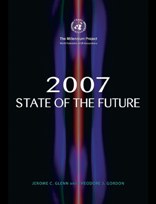
2007 State of the Future
Millennium Project (WFUNA)
SEE REVIEW
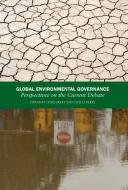
Global Environmental Governance:
Perspectives on the Current Debate
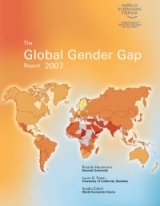
Global Gender Gap Report
WEF, 8 November 2007
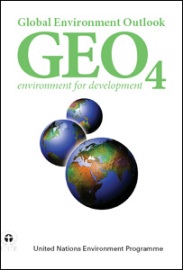
General Environmental Outlook 4 (UNEP)
DOWLOAD SUMMARY FROM UNEP
DOWNLOAD REPORT FROM UNEP
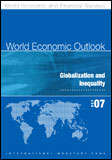
World Economic Outlook:
Globalization and Inequality
IMF, October 2007
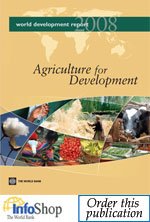
World Development Report 2008:
Agriculture for Development
World Bank, October 2007

MDG Toolkit
United Nations Development Group
Five modules:
1. Millennium Declaration and the MDGs
2. Operationalizing the MDGs
3. Monitoring and Reports
4. Advocacy and Campaigning
5. MDG Needs Assessment and Financing Analysis


Mimetic Theory of René Girard

Socioeconomic Democracy
Robley E. George, Director
Center for the Study of Democratic Societies

International Energy Agency
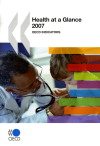
OECD Health at a Glance 2007
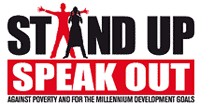

Intute: Comprehensive Web Resources
for Education and Research
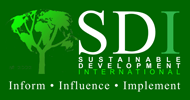

Library of Congress
Global Gateway to
Electronic Resources Worldwide

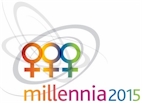




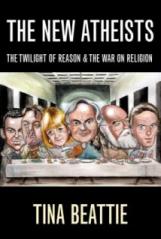
Published 29 October 2007
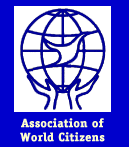
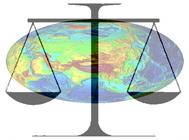
Globalization for the Common Good
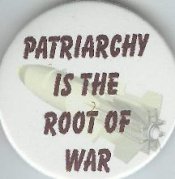
Source: Cyrano's Virtual University
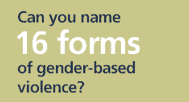
Source: UN Population Fund (UNFPA)

Global Warming
UNEP Gallery of Child Artists
Ekatrina Nishchuk, Age12
Russia, 2007
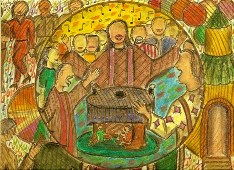
Woman Priest Presiding at the Eucharist
Farid de la Ossa Arrieta
Colombia, 2007
Announcements
and CFPs
SSNV Call for Papers
|
This newsletter is now seeking scholars willing to write (pro-bono) short articles about the impacts of all forms of secular and religious violence on human solidarity and ecological sustainability, as well as critical reviews of this work from the perspective of various religious traditions, i.e., Christianity, Buddhism, Judaism, Islam, Hinduism, Sikhism, Bahá'í, etc.
Articles should be 1000 words minimum and 5000 words maximum. Please submit only material that has not been already published elsewhere. The author's CV should be submitted with the paper. The newsletter is published monthly, but there are no specific deadlines. Papers approved by the editor will be included as an "invited paper" when time and space allows.
Email your submission to the editor, Luis T. Gutierrez.
| |
IAMCR 2008
Call for papers to be presented at the IAMCR World Congress in Stockholm, July 20-25, 2008, on "Media and Global Divides." Abstracts are due to January 31, 2008, to be submitted to heads of sections and working groups (link on the conference website).
MIGRATION & GLOBALIZATION
CFP for special issue of Third World Quarterly (TWQ) that will critically examine the new issues and new politics regarding migration in the era of globalisation from a majority world perspective. Prospective authors should contact the Guest Editor of this special issue,
Ronaldo Munck, for guidance and advice.
CHALLENGING BOUNDARIES
Social Policy Association Annual Conference, The University of Edinburgh, 23-25 June 2008. Throughout the world, traditional boundaries between territories, services and professions are being questioned; thus the theme, "Challenging Boundaries." Keynote Speakers: Ann Orloff (Northwestern University, Chicago), Michael Keating (European University Institute, Florence and University of Aberdeen), Wim Van Oorschot (Tilburg University). Paper proposals (abstracts) should be in the form of an e-mail attachment of 300-400 words mailed to SPA 2008 by the closing date of Friday 1 February 2008. Decisions on acceptances will be made by 22 February 2008. The deadline for papers will be 9 June 2008.
ECREA 2008
Call for papers. ECREA's 2nd European Communication Conference. Barcelona, 25-28 November 2008. Hosted by Universitat Autònoma de Barcelona (UAB). More information can be found on the conference website. This information includes the required format of paper, panel and poster proposals and the conference focus of the different ECREA sections. This website will also be used as the site to submit your proposals.
ENTHNOGRAPHIES OF GENDER
AND GLOBALIZATION
International conference: 3 - 4 July 2008, Amsterdam. The conference is sponsored by CEDLA, Centre for Latin American Research and Documentation. LOVA (Netherlands Association for Gender and Feminist Anthropology) invites social science scholars to participate in this international conference by presenting their research in an individual paper or panel. We particularly encourage participants to submit audio-visuals and other alternative ways of presenting their research. Participants may register through sending individual paper or panel proposals to LOVA before February 1, 2008.
ENVIRON 2008
The ESAI Environ 2008 colloquium will take place at Dundalk Institute of Technology from 1st - 3rd February 2008. The conference will be structured into technical presentations in parallel sessions as well as poster presentations. The point of contact is Suzanne Linnane.
HEALTH & BIODIVERSITY
"The Second International Conference on Health and Biodiversity (COHAB2), will take place from Monday 25th to Thursday 28th February 2008 in Galway, Ireland. The conference will aim to advance dialogue and collaboration across sectors on issues linking biodiversity with human health and well-being, and highlight practical cross-sectoral and holistic approaches to addressing the issues."
For more information: Cohabnet Conference.
POSTMODERN SPIRITUALITY
Conference: Donner Institute for Research in Religious and Cultural History, Abo, Finland, 11-13 June 2008. "Postmodern spirituality is here, in contrast to traditional spirituality, understood as a form of spirituality that appears as an alternative to conventional religion. It refers to the way people outside of the established religions and religious movements handle existential and spiritual issues. They do not choose ‘ready-made’ solutions, but in true eclectic spirit themselves decide what they want to believe in and create their own combinations and sets of answers to existential questions." Point of contact: Donner Institute
BIBLICAL LITERATURE
Date: 6-11 July 2008. Place: Auckland, NZ. The Society of Biblical Literature (SBL) is hosting a large gathering of
groups from the Asia-Pacific region, and the AASR has been invited to participate in the 2008 International Congress for the Study of Bible, Religion and Theology. Conference convenor: Kathleen McPhillips
INFORMATION SYSTEMS 2008
Sponsored by IADIS. Algarve, Portugal, 9-11 April 2008. Description: "A new paradigm is sweeping the society, organisations and the business environment. In fact, society and business world alike are moving from its tangible bases to intangible ones based on knowledge and information systems (IS) to support its management, use and sharing. In this emerging paradigm, terms like information, communication, knowledge, and learning have acquired a critical relevance to the understanding of the nature of
contemporary business. This led authors such as Drucker (1993) to state that “we are entering the knowledge society in which the basic economic resource… is knowledge”." Point of contact: Secretariat.
SOCIOLOGICAL RESEARCH
AND PUBLIC DEBATES
Research Committee on Sociology of Religion from the International Sociological Association (ISA), Forum of Sociology, Barcelona, Spain, September 5-8, 2008. Abstracts (no more than 300 words) with full correspondence address of the presenting author and institutional affiliation of all authors should be sent to Roberto Blancarte and Olga Odgers, plus the convener of the session most likely to include the paper, no later than January 11, 2008.
GLOBALIZATION FOR
THE COMMON GOOD
Trinity College, University of Melbourne, Australia, June 30 – July 4, 2008. Proposals should be received by Monday, 11 February 2008. For more information: Christine Siokou.
CHILD SLAVERY
An international conference is to be held on all aspects of child slavery at the Wilberforce Institute for the study of Slavery and Emancipation (WISE), University of Hull, UK in association with AntiSlavery International, Gilda Lehrman Center, Yale University and Free the Slaves on November 27-28 2008. For more information:
Jane Ellison.
INTEGRAL INTERNATIONAL DEVELOPMENT
Hosted and organized by Integral International Development Center of Integral Institute and Canadian NGO Drishti - Centre for Integral Action. April 22-26, 2008, Istanbul, Turkey. For more information: Gail Hochachka.
HERITAGE 2008
World Heritage and Sustainable Development International Conference, Vila Nova de Foz Côa, Portugal, 8-9 May 2008. In a more globalized world, Heritage should be addressed in innovative and sustainable ways, underlining the role of human and natural heritage as a contra-hegemonic trend. By understanding cultural differences, different peoples may find opportunities to enhance their contribution to a more sustainable world. HERITAGE 2008 aims to gather in an International Conference several worldwide experts on the relationships between Heritage and Human Development, and the Natural Environment and Building Preservation, promoting significant discussion on these relevant topics. The conference is organized with the official support of the Portuguese Ministry of Culture. Point of contact: HERITAGE 2008.
RELIGION, GLOBALIZATION, AND SECURITY
Second Global International Studies Conference, University of Ljubljana, Slovenia, 23-26 July 2008. Topics: political culture and identity, ‘civilisational’ concerns, human security and development, regional conflict studies, transnational religious ideologies, terrorism, political theology. Point of contact: Jeff Haynes.
TECHNOLOGY FOR DEVELOPMENT
Department of International Development (QEH), University of Oxford, 29-30 May 2008. Science and technology play a significant role in economic growth and social development. In what ways can technological capabilities for development purposes best be built up in developing countries? What is the best way of employing technology to address environmental considerations and poverty reduction objectives? What innovation and technology policies should be introduced to reflect the needs of sustainable development? What is the
impact of the rising technological power from the South on the world economy? This conference aims to address these issues with a special focus on the recent emerging economies in the South: Brazil, Russia, India, China and South Africa (BRICS). Comparative studies are particularly welcome. Those wishing to present papers should send extended outlines of about 1000 words to Sanjaya Lall. The deadline for submissions is 15th January 2008. Final copies of accepted papers are required by 15th March 2008.
CLIMATE CHANGE:
SCIENCE AND SOLUTIONS
The National Council for Science and the Environment (NCSE) announces the 8th National Conference on Science, Policy, and the Environment: Climate Change Science and Solutions. January 16-18, Washington DC. "The rising attention and action surrounding climate change solutions is encouraging. Yet we are reminded by respected leaders such as Sir Nicholas Stern that there is an urgent need for swift and large-scale action. Climate change solutions must be concerted, comprehensive, and credible. This conference seeks to develop a robust action agenda for moving forward on this global challenge at all scales, by inviting all stakeholders to the table for an honest and critical look at these key issues." For details contact NCSE Conference 2008 and visit the conference website.
THE BODY AND SOCIAL POLICY
University of Leeds, UK, 15 January 2008. "The body has become a prominent concept within sociology and is becoming a major feature of analysis for those investigating contemporary issues of social exclusion, welfare and policy. This One Day conference aims to foster dialogue between sociological theory and social policy by exploring contemporary debates around issues such as age and ageing, care and care-giving, disability, health and well-being, social capital and social exclusion." Abstract deadline: 30th November 2007. For further information about the conference please contact: Angharad Beckett or Justin Waring.
LONG-TERM POLICIES
GOVERNING SOCIO-ECOLOGICAL CHANGE
The Oldenburg Centre for Sustainability Economics and Management, CENTOS, Oldenburg University, the Environmental Policy Research Centre, Freie Universität Berlin, and its partners are pleased to invite to its 2008 Berlin Conference on the Human Dimensions of Global Environmental Change/ International Conference of the Social-Ecological Research Programme to be held in Berlin on 22 - 23 February 2008. This conference will be the eighth event in the series of annual European Conferences on the Human Dimensions of Global Environmental Change, begun in Berlin in 2001. This year’s conference will address the theme ‘Long-Term Policies: Governing Social-Ecological Change’. Download Call for Papers. Points of contact: conference chair, Bernd Siebenhüner, or conference co-chair, Klaus Jacob
ENVIRONMENTAL WRITERS' CONFERENCE
Boothbay Harbor, Maine, 10-13 June 2008. "The Fifth Environmental Writers' Conference in honor of Rachel Carson will be held once again at The Spruce Point Inn in Boothbay Harbor, Maine, and scholars, writers, educators and artists are welcome to attend. The Conference is held biennially, and it is a blend of scholarly and creative presentations, readings, informal discussions and workshops. In addition, it offers participants an opportunity to enjoy a wide variety of outdoor activities in one of the North Atlantic coastline’s most serene locations where the forest really does meet the sea." For more information, email new-cue or contact the conference website.
PREPARING CITIZENS FOR A
GLOBAL DEMOCRACY
Wolstein Center at Cleveland State University, 29 February 2008. The conference will examine a range of critically important themes of Global Democracy. Speakers will include some of the nation’s leading thinkers in the field of education, as well as 10 workshop presentations by researchers and practitioners. For more information, email the Partnership Conference or visit the conference website.
RELIGION AND THE STATE
The Indiana University Department of Religious Studies announces its annual Graduate Conference, to be held March 20-21, 2008 at Indiana University's Bloomington campus. The topic is “Religion and the State”. The goal of this year’s conference is to explore the harmonies and tensions present in the relationships between religious traditions and the state. We will accept papers dealing with this issue in any historical or geographic context, in theory and/or in practice, and from any disciplinary background. Please send 300-word abstracts and any questions to Diane Fruchtman by 17 December 2007.
LEADERSHIP & MANAGEMENT IN SUB-SAHARAN AFRICA
Accra, Ghana, 7-9 July 2008. Conference paper submissions are being accepted, and information is available at conference website. The keynote speakers will be Prof Stella Nkomo, Bateman Professor of Business Leadership at the University of South Africa, Graduate School of Business Leadership, Pretoria, and Prof Terence Jackson, Business & Management Group, Middlesex University Business School, London.
MANAGING INTERNATIONAL DEVELOPMENT
Special Issue, The Journal of Applied Behavioral Science. We invite submissions to a special issue focused on how organizational development and change (OD&C) is managed in international contexts. Referring to implementation of established change and development models across boundaries and within different cultural contexts, national or geographical settings, and organizations with international, transnational, or multinational memberships, we encourage rich, thick descriptions of how a change process unfolds, how change processes are adapted, how change processes can be evaluated, and how emerging change models can be noted for further development. These descriptions could be supported or underpinned by quantitative data if desired. Please follow JABS guidelines; submit manuscripts by e-mail prior to March 15, 2008, to: Chung-Ming Lau, Jean E. Neumann, Christopher G. Worley.
ICAES 2008
This is the 16th world congress of the International Union of Anthropological and Ethnological Sciences. The theme of the conference is "Humanity, Development, and Cultural Diversity." The conference will take place in Kumming, China, 15-23 July 2008. The points of contact are Prof. Zhang Haiyang and Prof. Zhang Jijiao. Application and registration forms and other information can be obtained from the conference website.
WWMM 2808
Women's Worlds 2008 is "the most important congress on academic research on gender and women and feminist social movements." This major international event will bring together people from all over the world - researchers, specialist, activist and major international public figures to discuss the key issues that impact women. A key goal is to fight against social injustices and gender inequalities. The 2008 interdisciplinary Congress has selected three concepts: frontiers, dares and advancements to address a spectrum of themes and issues that can help us understand the world we live in. Universidad Complutense de Madrid, 3-9 July 2008. Points of contact: Dr. Claudia Malacrida, Dr. Leslie Roman, Conference Secretariat.
SOCIAL SIMULATION CONGRESS
Next year the 2nd World Congress in Social Simulation (WCSS'08) will take place on July 14-16, 2008, at George Mason University, hosted by the Center for Social Complexity, just outside Washington DC. Additional information will follow soon, including the official call for papers, website for early registration, scientific committees, lodging information, and preliminary program. The WCSS series is a joint collaboration of the regional international professional organizations: European Social Simulation Association ESSA; North American Association for Computational Social and Organizational Sciences NAACSOS; and
Pacific Asia Association for Agent Based Social Systems Science PAAA. For more information contact Professor Claudio Cioffi-Revilla, Director of the Center for Social Complexity at George Mason University.
SCIENCE, POLICY, AND ENVIRONMENT
Sponsored by the National Council for Science and the Environment (NCSE). January 16-18, 2008. Washington Convention Center, 801 Mount Vernon Place, N.W., Washington, DC 20001. Focus on Climate Change: Science and Solutions Resources. Please direct questions on NCSE's next conference to NCSE 2008 Conference on Climate Change.
GENDER AND WELL-BEING
A symposium on "Gender and Well Being: The Role of Institutions from Past to Present." Madrid, Spain, 25th-27th June 2008. From the CFP: "There are fundamental questions about the origins and nature of individual and social well-being in Europe, as well as on its sustainability. The symposium's aim to develop a new concept of well-being, examining the socially gendered indicators, actors and processes affecting the production and access to well-being across the life-course. This reflection is meant to be conducted at a crossroads between history, social science and economy." Send abstracts to Paloma de Villota with copy to the Secretary by this Form. Papers must be sent by e-mail no later than 26 May 2008.
BIOLOGY AND RELIGIOUS BEHAVIOR
Call for Papers: "The Biology of Religious Behavior: A Human Ethology Perspective on Religion." Care to spend time in Italy studying psychology and religion? Then consider submitting a paper to the International Society for Human Ethology meeting in Bologna, Italy, July 14-18, 2008. Better yet, there is a possibility for funds to support your travel to Bologna for the conference. Sponsored by the Society of Human Ethology. Bologna, Italy, 14 – 18 July, 2008. The deadline for abstract submission is 1 March 2008. For more information visit the ISHE2008 conference website. Points of contact are Marco Costa, University of Bologna, Italy and Luca Tommasi, University of Chieti, Italy. See also the PsyRel blog of Jay Feierman.
MDG & MEA
Slide Presentations
The Millennium Development Goals (MDG) audio slides, produced by the Earth Institute at Columbia University, provide a basic overview of the MDG program. Prof. Jeffrey D. Sachs, director of The Earth Institute, introduces the MDGs. There are eight sets of slides, one for each MDG. The 2015 targets for each MDG are defined. NB: Adobe Shockwave Player is needed to view these slide presentations. There are many MDG slide presentations available for free downloading, and it is not difficult to google them up. One that is good for young children is the one provided by SlideShare.
The Millennium Ecosystem Assessment (MEA) evaluated the consequences of ecosystem change for human well-being. From 2001 to 2005, the MEA involved the work of more than 1,360 experts worldwide. Their findings provide a state-of-the-art scientific appraisal of the condition and trends in the world’s ecosystems and the services they provide, as well as the scientific basis for action to conserve and use them sustainably. There are several MEA Slide Presentations, in several languages, available for free download.
The MEA also produced a number of reports, maps, graphics, and other resources that may be helpful to educators and researchers.
Site Search
![[fusionbot]](fusionbot.gif)
Downloads
SSNV-MDG
Knowledge Taxonomy
and
Links Directory
The taxonomy and database can be downloaded as either an HTML web page or an excel spreadsheet (the html code is embedded in the excel file for ease of modification).
Download
HTML Web Page
Download
Excel Spreadsheet
Donations
Donations are gratefully accepted.
To donate via PayPal:
To donate via Amazon:

Thank you for helping
to make this work possible.
Tell a Friend:
Solidarity, Sustainability, and Non-Violence Research Project
Visit the Home Page
|
"Those who cannot remember the past
are condemned to repeat it."
George Santayana
Spain and USA, 1863-1952
|
|
|
Page 1
|
|
| |